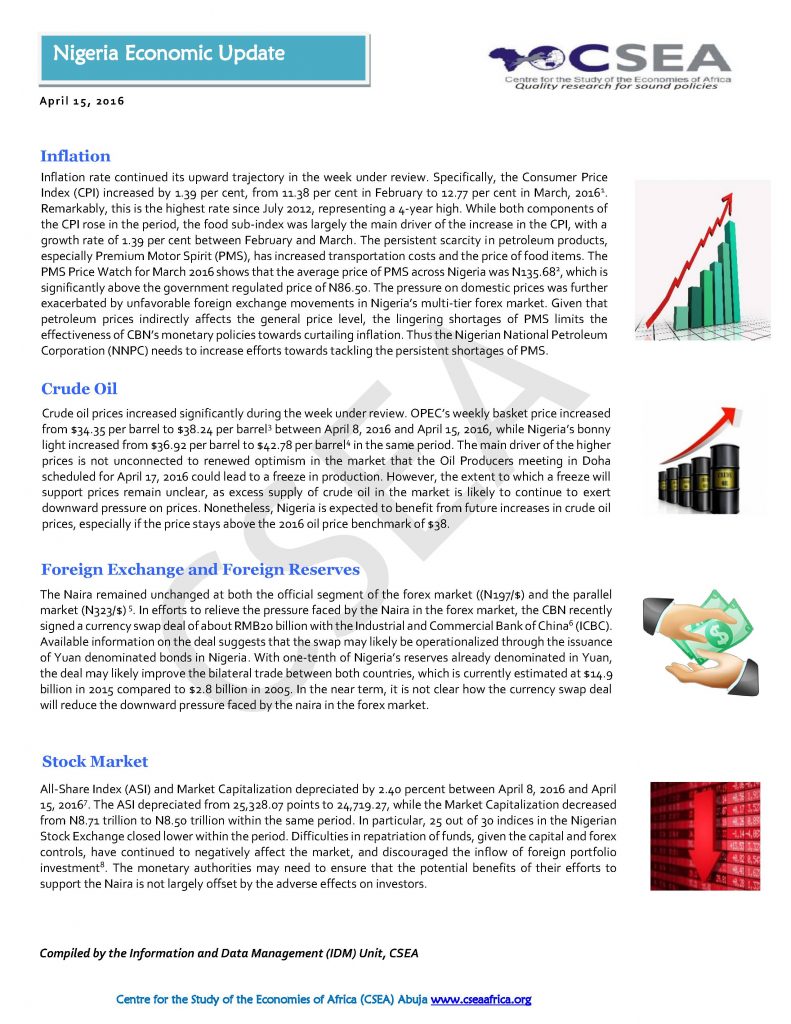Macroeconomic Report & Economic Updates

May 3, 2016
Nigeria Economic Update (Issue 18)
Inflation
rate continued its upward trajectory in the week under review. Specifically,
the Consumer Price Index (CPI) increased by 1.39 per cent, from 11.38 per cent
in February to 12.77 per cent in March, 20161. Remarkably, this is the
highest rate since July 2012, representing a 4-year high. While both components
of the CPI rose in the period, the food sub-index was largely the main driver
of the increase in the CPI, with a growth rate of 1.39 per cent between
February and March. The persistent scarcity in petroleum products, especially
Premium Motor Spirit (PMS), has increased transportation costs and the price of
food items.
Related
Infrastructure Financing In Nigeria:
Similar to most sub-Saharan
African (SSA) countries, Nigeria has a huge infrastructure deficit which
considerably limits efforts towards achieving inclusive growth, sustainable
development, and poverty reduction. With infrastructure stock estimated at
20-25 per cent of Gross Domestic Product (GDP), Nigerias infrastructure stock
is still significantly lower than the recommended international benchmark of 70
per cent of GDP. The 2014 National Integrated Infrastructure Master Plan (NIMP)
estimates that a total of US$ 3 trillion of investments, or US$100 billion
annually, is required over the next 30 years to bridge Nigerias infrastructure
gap. In particular, the Plan estimates that Nigeria will have to spend an
annual average of US$ 33 billion infrastructure investments for the period 2014
-2018. This means that Nigeria will have to more than double its spending on infrastructure
from the current 2-3 per cent of GDP to around 7 per cent to make appreciable
progress in infrastructure development over the next three decades.
Regional Trade For Inclusive Development In West Africa
This
study examines the potential of regional trade in facilitating the achievement
of inclusive development in the West African region. It employs descriptive
analysis to examine the nature, composition and dimension of ECOWAS trade within
the group and with the rest of the world, vis--vis three other Regional
Economic Communities (RECs) in sub-Saharan Africa (SSA). From the preliminary
study, it can be observed that the growth rate of West African economies is
increasing, but the rising economic growth does not translate to improvement in
inclusive development, as there was no significant reduction in poverty levels in
the region. Further evidence reveals that extra-regional trade of the region is
increasing at a very high rate, and also at a disproportionate rate with
intra-regional trade, compared with SADC. This indicates the existence of
opportunity to boost regional trade for inclusive development through
conversion of part of the extra-regional trade into regional trade.
